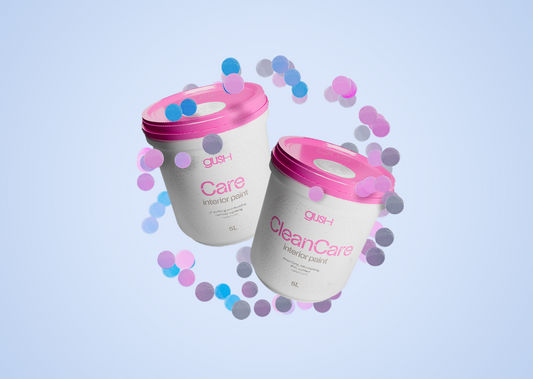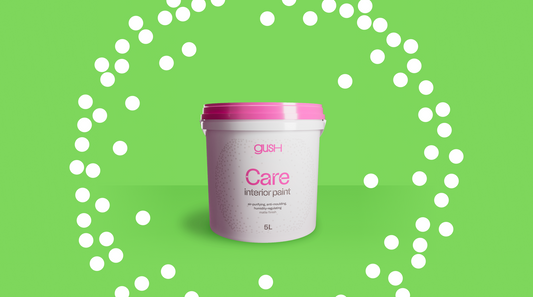Science
This dangerous everyday chemical is everywhere: how to protect yourself

Living toxic-free.
We live in a society full of pollutants. More often than not, we don’t fully know what we’re putting in, on, and around our bodies. Besides the air we breathe, there’s also food, the packaging that holds them, cosmetics and personal care items, even toys, perfumes and household objects. It turns out, we’re surrounded by countless chemicals that are harmful to living beings — including phthalates.
What are phthalates?
They’re a huge class of man-made chemical compounds¹. Since the dawn of industrialisation, these chemicals are used as plasticisers to enhance flexibility, durability and longevity of plastics; alongside solvents and personal care products. These chemicals can easily enter our bodies through inhalation, ingestion, or skin contact. They’re pretty elusive and omnipresent — colourless, odourless and hard to pinpoint.

What’s the problem with phthalates?
Numerous studies have been conducted showing the health implications of constant phthalate exposure. For one, they interfere with our hormones — be it male or female.| Health implication | What it means |
|---|---|
| Uterine fibroids | Non-cancerous tumours that grow in or around the uterus². Can cause pelvic and back pain, heavy menstrual bleeding etc. |
| Asthma | Increased exposure to phthalates worsens pulmonary function and airway inflammation in asthmatic children³. |
| Attention-deficit hyperactivity diorder (ADHD) | High quantities of phthalates found in a mother’s urine were associated with an increasing risk of ADHD in children⁴. |
| Type 2 diabetes | Increased phthalate levels were associated with increased insulin resistant — which controls the blood glucose levels in our cells⁵. When this happens, it’s likely a precursor to type 2 diabetes. |
| Male fertility issues | Men with high concentrations of phthalates in their urine have seen lower sperm counts and poor sperm motility⁶. |
i
How are we exposed?
We can ingest them, inhale them, or they could get absorbed into our skin¹. If you use a plastic food container containing phthalates, it could leech into your food and thus get ingested in your body. Alternatively, you could potentially inhale phthalate particles lingering in the air.

Who is most at risk?
While all of us are at risk, the following groups of people are most at risk:
- Manual labourers that work closely with plastics, such as plastic manufacturing
- Pregnant women
- Children under the age of 3
- Pets
Children under the age of 3 in particular, are still developing their bodies and immune systems¹. They are also especially susceptible due to circumstance — with plastic toys and their oral curiosity leading to biting, chewing and sucking. Studies show that animals and pets are also at high risk — with danger to their reproductive health and other development issues.

How can you identify phthalates?
Sometimes it’s about reading the packaging. Other times, you just need to know what to look out for.
Flexible plastics & PVC
Phthalates are used as an additive to PVC products, which makes them flexible and elastic. If you have any flexible plastic products, chances are, they have phthalates in them unless otherwise stated as phthalate-free¹.
Includes: Vinyl flooring, garden hoses, shower curtains, adhesives, gloves, automobile parts, food containers.

Containers
As a general rule of thumb, it’s safer to use only microwave-safe containers and phthalate-free containers¹. Try to purchase or store your food items in glass or stainless-steel containers instead.
Avoid recycling-code-3
For plastic products, recycling codes are always printed on them. Take a moment to look for it, and if they’re labelled with a “3” — they contain phthalates¹. Numbers 1, 2, 4 and 5 — PETE, HDPE, LDPE and PP are phthalate-free.

Avoid “fragrance”.
Reading ingredient lists can be tricky. Many consumer goods make it difficult for us to identify specificities of ingredients. When the vague “fragrance” is listed, it’s highly likely that phthalates are present⁷. All because they help fragrances linger on your skin longer.
Includes: Nail polish, hair spray, body lotion, shampoo, conditioner, and cosmetics.
Phthalates and paints.
Besides plastics, phthalates have a history with paint too. They’re added on as plasticisers that improve the paint’s flexibility and durability qualities⁸. Once the paint dries up, these plasticisers adhere to air particles. Dibutyl phthalate (DBP) is the most common phthalate in the paint industry which can cause severe health issues. It is also important to note that phthalates are not generally listed on the product label of most of the paints.
What about Gush paints?
Great news — none of our paints or paint packaging contain phthalates. Results from our SETSCO test report shows no phthalate variants present including: Dibutyl Phthalate (DBP), Benzylbutyl Phthalate (BBP), bis(2-ethylhexyl) Phthalate (DEHP), Di-n-octyl Phthalate (DNOP), Diisodecyl Phthalate (DIDP) and Diisononyl Phthalate (DINP). Our paint packaging is made out of PP plastic with recycling-code-5, which means they’re not only safe, but recyclable too.
When it comes to non-toxicity, Gush paints are also free of heavy metals, VOCs and odour. Completely safe for pregnant women and children too. In fact, our paints were made specifically to tackle the issue of indoor air pollution. They work hard in the background to purify your air of existing VOCs from other sources in your home, without needing any additional light or electricity to be effective.

Safe for the whole family.
At Gush, we care about built environments and those who inhabit them. Our products are created with intentional thought — keeping you safe from air pollutants with our air-purifying and anti-moulding paints. This extends to the ingredients we use too, free of phthalates, heavy metals and other harmful substances. By choosing Gush, you’re reducing the release of phthalates into the environment, minimising its impact on humans and ecosystems.
When we stay in the know about these chemicals and other pollutants around us, we can find ways to avoid or mitigate them — protecting ourselves and our loved ones too.
Learn about our paint ingredients.
Read more about our paint science.
Bibliography.
1. ZeroBreastCancer. Phthalates (THAL-Ates) The Everywhere Chemical. https://www.niehs.nih.gov/research/supported/assets/docs/j_q/phthalates_the_everywhere_chemical_handout_508.pdf. Accessed 28 June 2023.
2. Runwal, Priyanka. “How ‘Everywhere Chemicals’ Help Uterine Fibroids Grow.” Magazine, National Geographic, 13 Jan. 2023, https://www.nationalgeographic.com/magazine/article/how-everywhere-chemicals-help-uterine-fibroids-grow-phthalates?rid=542CD8EED819CA9D48B95A161D4F6892&cmpid=org=ngp::mc=crm-email::src=ngp::cmp=editorial::add=Daily_NL_Friday_Science_20230113.
3. “Exposure to Phthalates Aggravates Pulmonary Function and Airway Inflammation in Asthmatic Children - PMC.” PubMed Central (PMC), https://www.ncbi.nlm.nih.gov/pmc/articles/PMC6296560/. Accessed 28 June 2023.
4. “New Study Confirms Link between Maternal Phthalate Levels, Risk of ADHD in Children - UNC Gillings School of Global Public Health.” UNC Gillings School of Global Public Health, https://www.facebook.com/UNCpublichealth, https://sph.unc.edu/sph-news/new-study-confirms-link-between-maternal-phthalate-levels-risk-of-adhd-in-children/. Accessed 28 June 2023.
5. Lang, Katharine. “Diabetes: Phthalate Exposure May Increase Risk in Some Women.” Medical and Health Information, Medical News Today, 13 Feb. 2023, https://www.medicalnewstoday.com/articles/phthalates-may-increase-diabetes-risk-in-women-but-which-women-and-why#:~:text=One hormone likely to be,precursor to type 2 diabetes.
6. Wallis, Claudia. “Common Chemicals May Harm Sperm and Pregnancies, Growing Evidence Shows - Scientific American.” Scientific American, Scientific American, 1 Mar. 2023, https://www.scientificamerican.com/article/common-chemicals-may-harm-sperm-and-pregnancies-growing-evidence-shows/#:~:text=Her work%2C and that of,with less of these substances.
7. “Six Tips to Avoid Phthalates after Study Highlights Health Harms, Billion-Dollar Costs | Environmental Working Group.” Environmental Working Group, https://www.ewg.org/news-insights/news/2021/10/six-tips-avoid-phthalates-after-study-highlights-health-harms-billion. Accessed 28 June 2023.
8. “Glossy Topcoat Exterior Paint Formulations Using Water-Based Polyurethane/Acrylic Hybrid Binders - ScienceDirect.” ScienceDirect.Com | Science, Health and Medical Journals, Full Text Articles and Books., https://www.sciencedirect.com/science/article/abs/pii/S0300944005002389. Accessed 28 June 2023.







